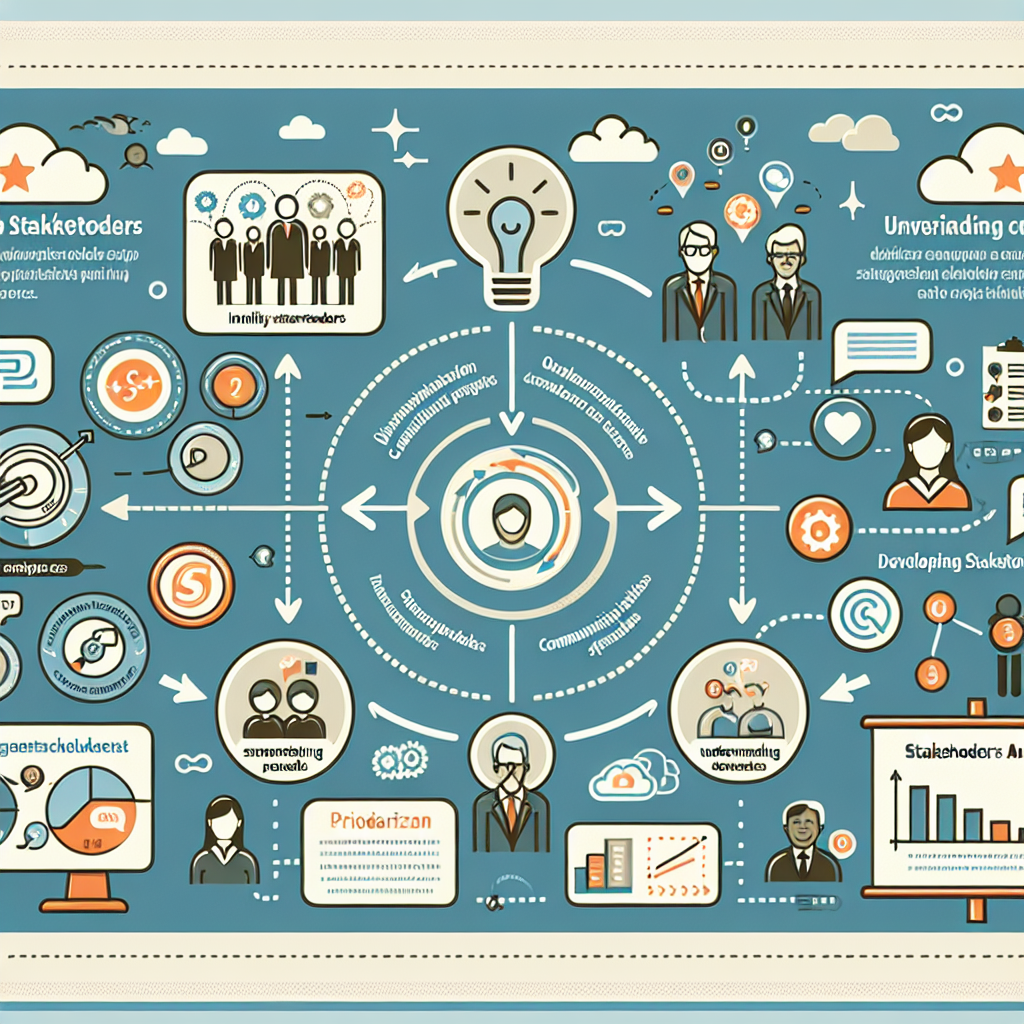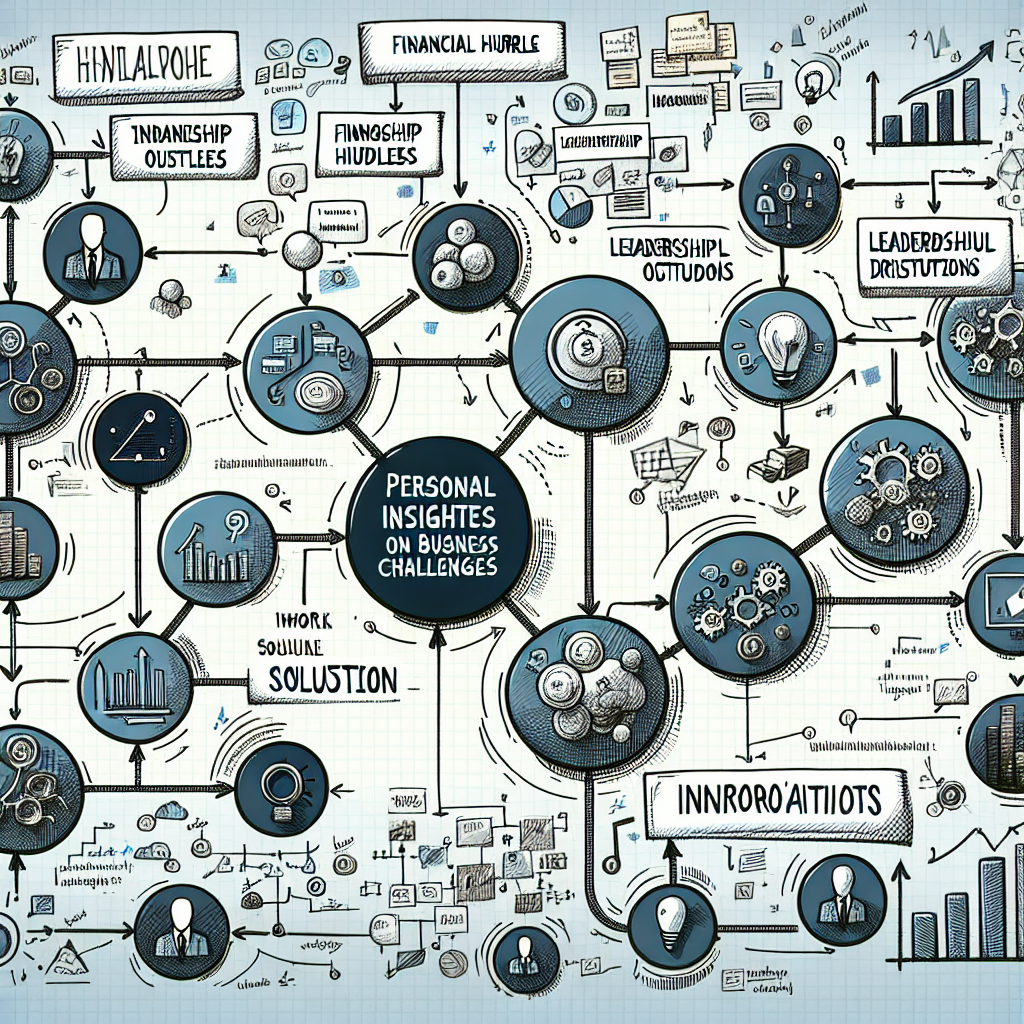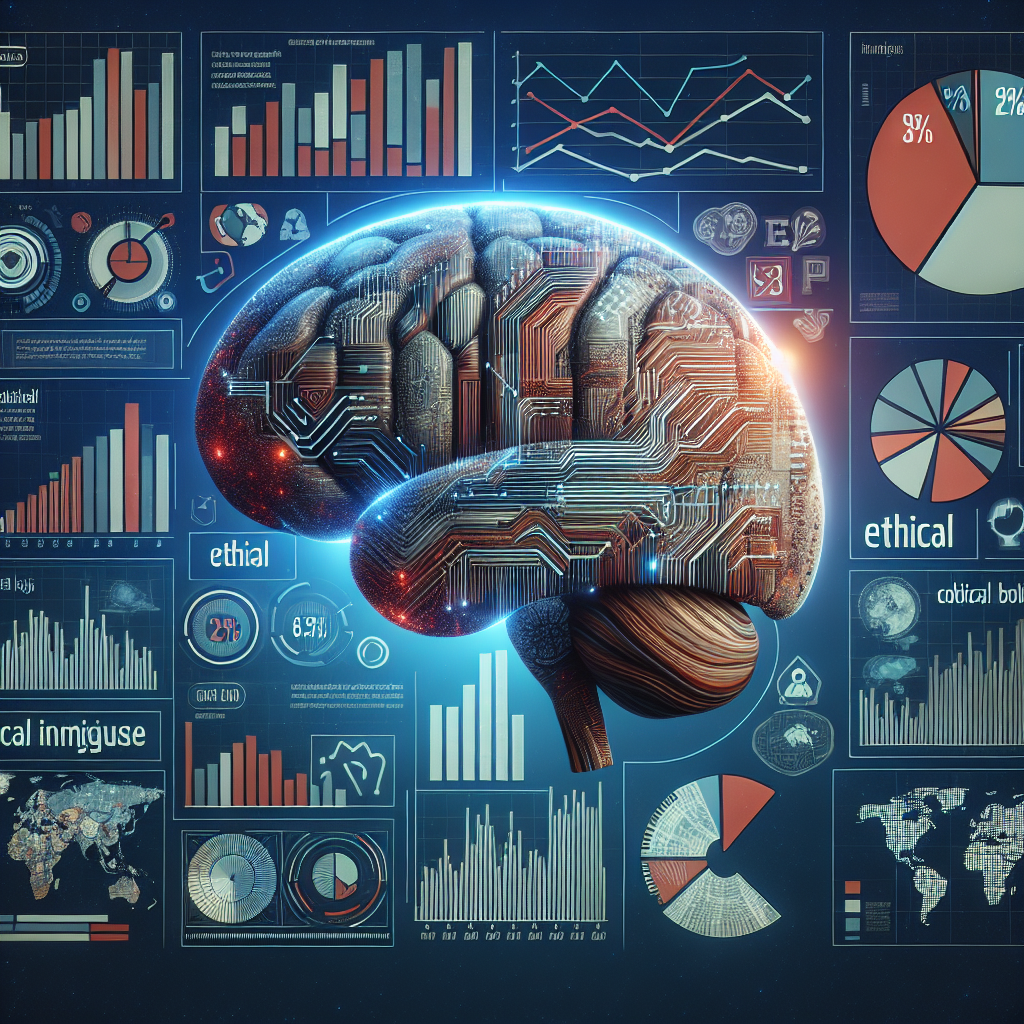How to Conduct Effective Stakeholder Analysis: A Step-by-Step Guide

Stakeholder analysis might sound like a complex business strategy, but it’s actually a powerful tool that can help you navigate projects, relationships, and organizational goals more effectively. Let me break down this process in a way that’s easy to understand and immediately actionable! What Exactly is Stakeholder Analysis? Think of stakeholder analysis as creating a strategic map of the people and groups who care about or are impacted by your project. It’s like assembling a team roster where you understand each player’s motivations, influence, and potential contributions. Why Should You Care? Better Communication: Know who needs what information Risk Management: Anticipate potential challenges Strategic Alignment: Ensure everyone’s interests are considered Step-by-Step Stakeholder Analysis Process Identify Stakeholders Start by listing everyone potentially involved or impacted. Think broadly – from team members to executives, customers to regulators. Assess Their Influence and Interest Create a matrix classifying stakeholders by: Power/Influence level Level of interest in the project Understand Their Perspectives Deep dive into each stakeholder’s: Goals and objectives Potential concerns Expected outcomes Develop Engagement Strategies Create tailored communication and involvement approaches based on your analysis. Pro Tips for Success Be comprehensive but focused Regularly update your analysis Use visual tools like stakeholder mapping Remain objective and empathetic Common Pitfalls to Avoid Don’t fall into these traps: Overlooking less obvious stakeholders Assuming static stakeholder interests Neglecting ongoing communication Final Thoughts Stakeholder analysis isn’t about perfection—it’s about creating meaningful connections and understanding. By investing time in this process, you’ll build stronger, more collaborative project environments.
Top 5 Tools Every Business Analyst Should Master in 2024

Hey there, business analysts! Are you ready to level up your game in 2024? As the business landscape continues to evolve rapidly, having the right tools in your professional toolkit is more crucial than ever. Let’s dive into the top 5 tools that will transform the way you work and help you become an absolute rockstar in your field! Why Tools Matter for Business Analysts Before we jump into the list, let’s be real – the right tools can make or break your efficiency and effectiveness. In 2024, business analysts need to be tech-savvy, data-driven, and able to communicate complex insights with ease. The Top 5 Must-Have Tools for Business Analysts in 2024 1. Power BI: Your Data Visualization Superhero Why it’s amazing: Transform complex data into stunning, interactive visualizations Key features: Real-time data dashboards Seamless integration with multiple data sources Advanced AI-powered insights Pro tip: Learn to create compelling storytelling dashboards that speak directly to decision-makers 2. Tableau: The Data Visualization Powerhouse What sets it apart: Incredibly intuitive interface for creating complex data visualizations Best for: Large-scale data analysis Interactive reporting Cross-platform compatibility 3. Python: The Programming Language of Business Intelligence Why you need it: Versatile tool for data analysis, machine learning, and automation Must-know libraries: Pandas for data manipulation NumPy for numerical computing Scikit-learn for machine learning 4. SQL: The Database Management Essential Critical skill: Extract, manipulate, and analyze data from complex databases Practical applications: Database querying Data cleaning Performance analysis 5. JIRA: Project Management and Collaboration Dynamo Why it’s a game-changer: Streamline project tracking and team collaboration Key benefits: Agile project management Customizable workflows Comprehensive reporting tools Pro Advice for Mastering These Tools Invest time in online courses and certifications Practice consistently with real-world projects Join professional communities and forums Stay updated with the latest tool updates and features Final Thoughts: The world of business analysis is dynamic and exciting. By mastering these tools, you’ll not just survive but thrive in the competitive landscape of 2024!
A Day in the Life of a Business Analyst Focused on AI Automation

Ever wondered what it’s like to be a Business Analyst specializing in AI automation? Let me take you through a typical day in my professional world, where technology meets strategic problem-solving! Morning: Setting the Strategic Agenda My day typically starts early, around 7:30 AM, with a strong coffee and a review of key performance indicators (KPIs) for ongoing AI automation projects. I’m constantly asking myself: How can we make business processes more efficient? Key Morning Activities Analyze current workflow bottlenecks Review machine learning model performance Prepare executive presentation decks Midday: Collaboration and Implementation By noon, I’m deep in collaborative sessions with: IT development teams Department heads Data scientists Practical Insights The magic happens when we translate complex technological potential into tangible business value. It’s not just about implementing AI—it’s about solving real organizational challenges. Afternoon: Problem-Solving and Recommendations My primary focus is always on delivering strategic recommendations that balance technological innovation with practical business needs. Common Challenges I Address Reducing manual data entry processes Improving predictive analytics accuracy Enhancing customer experience through intelligent automation Evening: Continuous Learning Technology evolves rapidly, so continuous learning is crucial. I typically spend my evening hours researching emerging AI trends, attending webinars, and updating my professional skills. “In AI automation, today’s cutting-edge solution is tomorrow’s standard practice.” – Industry Wisdom Pro Tips for Aspiring AI Business Analysts Develop strong communication skills Stay curious about technological advancements Build a solid foundation in data analysis Learn to translate technical concepts for non-technical stakeholders Remember, being a Business Analyst in AI automation is about bridging technology and business strategy—always keeping human needs at the center of technological solutions.
How AI Automation Can Enhance Business Analyst Careers

AI Automation: A Game-Changer for Business Analysts Let’s talk about something exciting: how AI is transforming the world of business analysis, not by replacing analysts, but by supercharging their capabilities! What Exactly Is AI Doing for Business Analysts? Think of AI as your super-smart assistant that handles the repetitive, time-consuming tasks, freeing you up to do what humans do best: strategic thinking and creative problem-solving. Key Ways AI Enhances Business Analyst Roles: Data Processing: AI can quickly analyze massive datasets that would take humans weeks or months Predictive Analytics: Advanced algorithms can forecast trends with remarkable accuracy Automated Reporting: Generate complex reports in minutes, not days Will AI Replace Business Analysts? Absolutely not! Instead, AI is creating an opportunity for analysts to evolve and become more strategic. The analysts who embrace AI will be the most valuable. Skills to Develop: AI literacy Critical thinking Strategic interpretation of AI-generated insights Getting Started with AI Integration Ready to level up? Start by: Taking online courses in AI and machine learning Experimenting with AI tools in your current role Staying curious and adaptable Remember: AI is a tool, and you’re the expert who knows how to use it!
My Toolkit for Business Analysis Success

What Does a Business Analysis Toolkit Really Include? When people ask me about my business analysis toolkit, I love sharing the mix of skills, techniques, and technologies that help me transform complex business challenges into clear, actionable strategies. Let me break down the essential components that make my professional approach both effective and dynamic. Core Technical Skills Data Analysis Software: Proficiency in Excel, Tableau, and Power BI Modeling Tools: Visio for process mapping and UML diagrams Project Management Platforms: JIRA, Trello, and Microsoft Project Analytical Techniques That Make a Difference Requirements gathering through structured interviews Gap analysis for identifying organizational opportunities Cost-benefit analysis for strategic decision-making Stakeholder impact assessment Soft Skills: The Hidden Toolkit Technical skills are crucial, but the real magic happens with strong communication, critical thinking, and adaptability. These interpersonal capabilities help translate complex data into compelling narratives that drive organizational change. Continuous Learning Approach My toolkit isn’t static—it evolves with industry trends, emerging technologies, and ongoing professional development. Certifications like IIBA and regular workshops keep my skills sharp and relevant. Recommended Resources Books: “Business Analysis Body of Knowledge” (BABOK) Online Platforms: Coursera, LinkedIn Learning Professional Networks: IIBA, local business analysis groups Remember, a toolkit is more than just tools—it’s about how creatively and strategically you apply them to solve real-world business challenges!
Lessons Learned from My First Year as a Business Analyst

My First Year as a Business Analyst: A Journey of Growth and Discovery When I first stepped into the role of a business analyst, I knew I was in for an exciting ride. But nothing could have prepared me for the incredible learning experience that would unfold over the next 12 months. Let me share some insights that might help aspiring business analysts or those curious about the role. What I Wish I Knew Before Starting Communication is King – Technical skills are important, but the ability to translate complex information into simple language is a superpower. Flexibility is Your Best Friend – No two projects are ever the same, and adaptability is crucial for success. Stakeholder Management is an Art – Building relationships is just as important as delivering technical solutions. Top 3 Unexpected Challenges Data Isn’t Always Perfect – Learning to work with imperfect data was a humbling experience. Communication Gaps are Real – Bridging technical and non-technical teams requires patience and skill. Continuous Learning is Non-Negotiable – The business and technology landscape changes rapidly. Key Lessons Learned If there’s one piece of advice I could give to new business analysts, it would be this: Stay curious, remain humble, and never stop learning. The most successful analysts are those who combine technical expertise with exceptional interpersonal skills. Tools That Saved Me Microsoft Excel (advanced functions are a game-changer) Visualization tools like Tableau Project management software Communication platforms like Slack Final Thoughts My first year as a business analyst taught me that this role is much more than just analyzing data. It’s about being a bridge between technology and business, understanding complex problems, and creating meaningful solutions. Pro Tip: Invest in your soft skills as much as your technical skills. The ability to listen, communicate, and empathize will set you apart in this dynamic field.
How I Approach Business Challenges as a Business Analyst

Navigating Business Challenges: My Personal Approach When people ask me about my work as a business analyst, they’re often curious about how I tackle complex business challenges. Let me break down my approach in a way that’s both practical and insightful. Understanding the Core of the Problem The first step is always deep investigation. I don’t just look at surface-level symptoms; I dig into the root causes. Think of it like being a business detective – gathering clues, connecting dots, and uncovering the real issues hidden beneath the obvious. My Strategic Problem-Solving Process Data Collection: Gather comprehensive information from multiple sources Analysis: Break down complex problems into manageable components Solution Development: Create targeted, actionable strategies Implementation Planning: Design a practical roadmap for execution Key Tools in My Toolkit Advanced data analytics software Process mapping techniques Stakeholder interview methodologies Performance metrics and KPI tracking Real-World Perspective Every business challenge is unique. What works in one scenario might not work in another. The secret is flexibility and continuous learning. I’m always adapting my approach, staying curious, and remaining open to innovative solutions. Pro Tip Communication is key! The most technically brilliant solution falls flat if you can’t effectively explain it to stakeholders. Always translate complex insights into clear, actionable language. Final Thoughts Business analysis isn’t about having all the answers immediately – it’s about asking the right questions, being methodical, and maintaining a strategic mindset. Each challenge is an opportunity to learn and grow.
Ethical Considerations in AI-Driven Business Analysis

Navigating the Ethical Landscape of AI in Business Analysis Let’s dive into one of the most fascinating and complex topics in modern technology: the ethical considerations surrounding AI-driven business analysis. It’s a world where data meets decision-making, and the stakes are higher than ever! What Exactly Are We Talking About? AI-driven business analysis is essentially using intelligent algorithms to process massive amounts of data, uncover insights, and help businesses make smarter decisions. But with great power comes great responsibility, right? Key Ethical Challenges Data Privacy: How do we protect individual information while gaining valuable insights? Algorithmic Bias: Can AI systems inadvertently perpetuate existing societal prejudices? Transparency: How can businesses ensure their AI decision-making processes are understandable? Real-World Implications Imagine an AI system that recommends hiring decisions. Sounds efficient, right? But what if the algorithm has learned biased patterns from historical data, potentially discriminating against certain groups? This is where ethical considerations become crucial. Best Practices for Ethical AI Implement rigorous testing for algorithmic bias Maintain human oversight in critical decision-making Create diverse teams developing AI systems Establish clear ethical guidelines Expert Perspective “Ethics in AI isn’t just a checkbox – it’s a fundamental responsibility of technologists and business leaders.” – Dr. Maria Rodriguez, AI Ethics Researcher Looking Forward The future of AI in business analysis is incredibly exciting, but it requires a thoughtful, nuanced approach that balances technological innovation with human values. Remember: Technology should serve humanity, not the other way around.
Building Scalable Automation Solutions for Small to Medium Businesses

Demystifying Automation: A Practical Guide for Small and Medium Businesses Let’s face it: automation sounds like something only big tech companies can afford. But the truth is, small and medium businesses can—and should—leverage automation to work smarter, not harder. 🚀 What Exactly is Business Automation? Think of automation as your digital assistant that handles repetitive tasks without constant human intervention. It’s like having an extra team member who works 24/7 without coffee breaks! Why Should SMBs Care About Automation? Save Time: Reduce manual data entry and administrative work Increase Accuracy: Minimize human error in routine processes Improve Productivity: Free up your team to focus on strategic tasks Where Can You Start? Customer Communication: Implement chatbots and automated email responses Sales Tracking: Use CRM systems with automated follow-ups Invoicing: Automate billing and payment reminders Budget-Friendly Automation Tools You don’t need a massive tech budget to get started. Tools like Zapier, Mailchimp, and HubSpot offer affordable automation solutions that can transform your business workflows. Pro Tips for Successful Automation Start small and scale gradually Choose tools that integrate with your existing systems Train your team on new automation processes Remember, automation isn’t about replacing humans—it’s about empowering them to do their best work! 💡
Real-World Examples of AI Enhancing Business Analyst Productivity

AI: Your Secret Weapon in Business Analysis Ever wondered how modern business analysts are supercharging their productivity? Let’s dive into the exciting world of AI-powered business analysis! What Exactly Can AI Do for Business Analysts? Great question! AI isn’t just a buzzword – it’s a game-changing tool that’s transforming how business analysts work. Here are some real-world examples: Data Analysis on Steroids Imagine processing months of complex data in minutes. AI tools like Tableau and Power BI can now automatically: • Identify hidden patterns • Generate predictive insights • Create interactive visualizations Automated Report Generation AI-powered platforms like Crystal can now draft comprehensive reports, saving analysts hours of manual work. They can: • Summarize key findings • Create executive summaries • Highlight critical trends Predictive Modeling Made Simple Machine learning algorithms can now predict business outcomes with remarkable accuracy, helping analysts make more informed recommendations. Real-World Success Stories Let’s look at some companies crushing it with AI: Netflix: Uses AI to analyze viewer preferences and recommend content Amazon: Leverages AI for inventory management and demand forecasting Walmart: Employs AI to optimize supply chain operations Pro Tips for Getting Started Ready to embrace AI in your analysis work? Here are some practical recommendations: Start with user-friendly tools like Microsoft Power BI or Tableau Take online courses in AI and machine learning fundamentals Experiment with free AI analysis tools to build confidence The Human Touch Matters Remember, AI is a tool – not a replacement. The most successful business analysts will be those who can effectively combine AI insights with human creativity and strategic thinking. Pro Tip: View AI as your collaborative partner, not your competitor! Final Thoughts AI is revolutionizing business analysis, making complex tasks faster, more accurate, and surprisingly enjoyable. By embracing these technologies, you’re not just staying competitive – you’re setting yourself up for future success.
